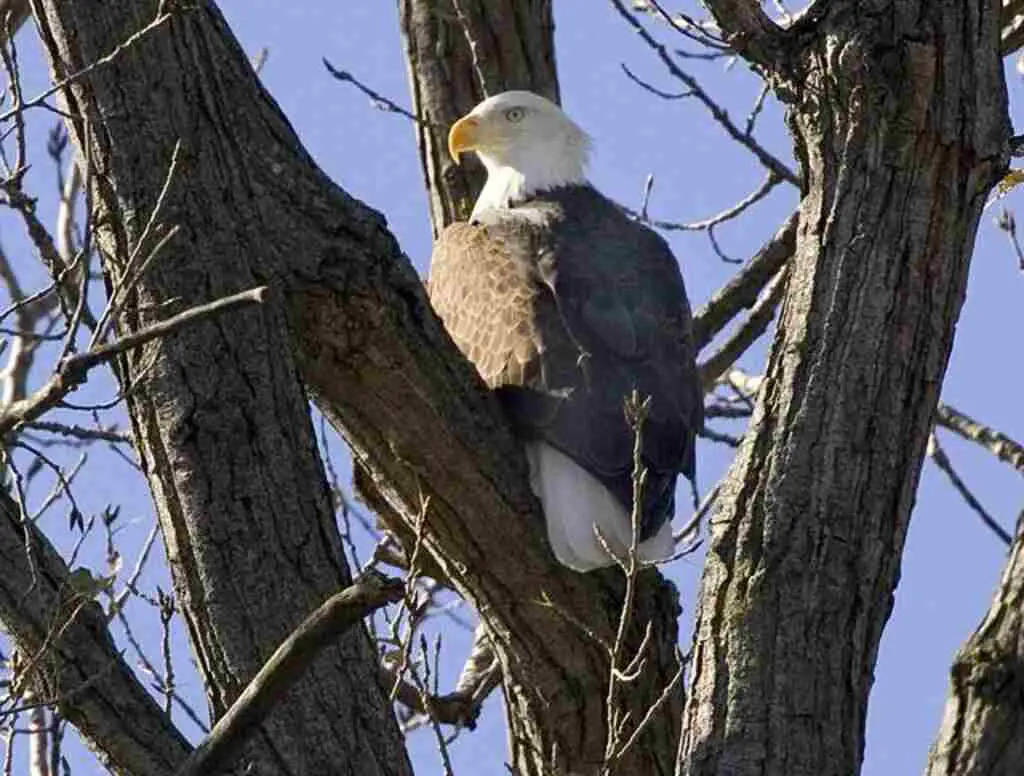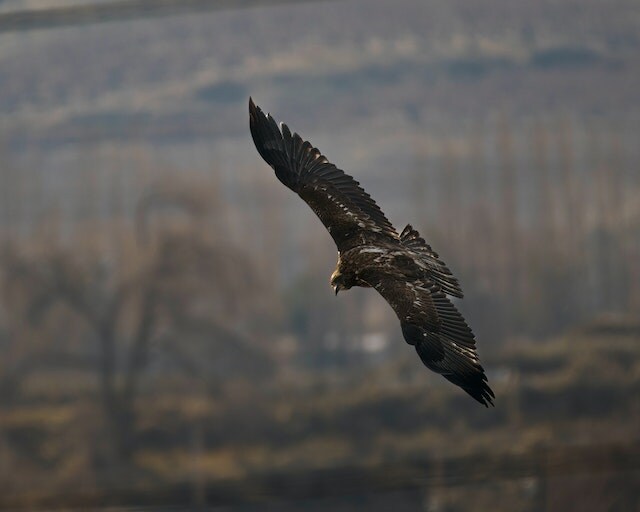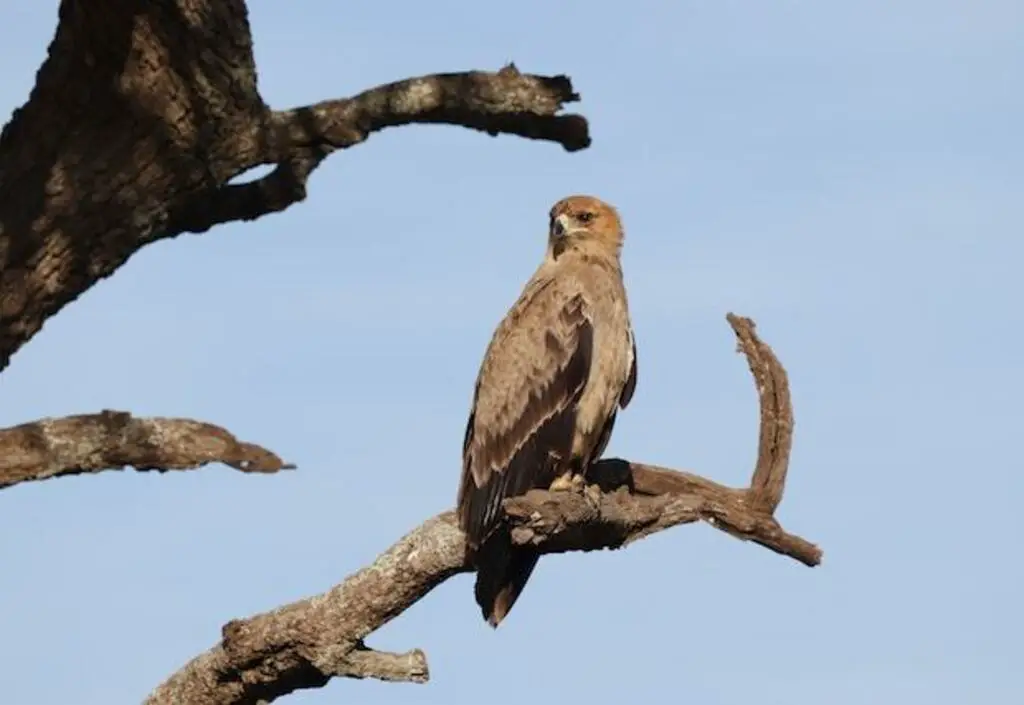In the vast tapestry of nature, where predator and prey engage in an eternal dance, the interplay between eagles and hummingbirds captivates the imagination.
Like a hidden thread woven into the fabric of this intricate ecosystem, their interactions reveal the complexities of survival and adaptation.
Eagles, with their formidable size and strength, symbolize power and majesty. Hummingbirds, on the other hand, embody grace and agility, their delicate wings a blur as they flit from flower to flower.
But do eagles, the mighty hunters of the sky, truly partake in the consumption of these diminutive avian jewels?
This article aims to explore the fascinating world of eagle-hummingbird interactions, shedding light on the feeding habits of eagles, the characteristics of hummingbirds, and the intricate dynamics of predator-prey relationships.
Through a scientific lens, we seek to unravel the truth behind the captivating question: do eagles eat hummingbirds?
Stay tuned as we embark on a journey of discovery and unravel the mysteries of nature’s tapestry.
Table of Contents
- 1 Key Takeaways
- 2 Do Eagles Eat Hummingbirds
- 3 Overview of Eagle Feeding Habits
- 4 Diet and Prey Preferences of Eagles
- 5 Characteristics of Hummingbirds
- 6 Eagle-Hummingbird Interactions in Nature
- 7 Differences in Hunting Techniques
- 8 Availability of Alternative Food Sources
- 9 Competition for Resources
- 10 Natural Predators of Hummingbirds
- 11 Importance of Understanding Predator-Prey Relationships
- 12 Myths and Misconceptions
- 13 Conclusion: The Fascinating World of Predator-Prey Dynamics
- 14 Frequently Asked Questions
- 14.1 Do eagles only eat hummingbirds, or do they consume other types of prey as well?
- 14.2 How do hummingbirds defend themselves against eagle attacks?
- 14.3 Are there any cases where hummingbirds have been known to successfully escape from an eagle’s grasp?
- 14.4 What are some examples of alternative food sources that hummingbirds might rely on if eagles are present?
- 14.5 Are there any known predators of hummingbirds besides eagles?
- 15 Author
Key Takeaways
- Eagles are apex predators with diverse feeding habits, including fish, small mammals, reptiles, and birds.
- While eagles have been observed preying on hummingbirds, it is usually when the hummingbirds are caught off guard or weakened.
- Factors such as habitat, prey availability, and competition influence eagle feeding behavior.
- Eagles and hummingbirds have distinct hunting techniques due to their contrasting physical attributes, with eagles relying on keen eyesight and powerful wings, while hummingbirds rely on agility and speed.

Do Eagles Eat Hummingbirds
Eagles are opportunistic predators and may target hummingbirds when the opportunity arises, although it is not their main food source.
While they primarily feed on larger prey such as fish and small mammals, hummingbirds can occasionally become a part of their diet.
Overview of Eagle Feeding Habits
Eagles, as apex predators, possess diverse feeding habits that encompass a wide range of prey, including but not limited to fish, small mammals, reptiles, and birds.
While fish often constitute a significant portion of their diet, eagles are opportunistic hunters and will exploit any available food source.
This includes capturing and consuming birds, such as hummingbirds, when the opportunity arises.
Hummingbirds are known for their small size and agile flight patterns, making them a challenging target for eagles.
However, eagles have been observed preying on hummingbirds, particularly when the birds are caught off guard or weakened.
This suggests that while hummingbirds may not be a primary food source for eagles, they can still be targeted under certain circumstances.
Understanding the eagle’s feeding patterns and the hummingbird’s feeding behavior provides valuable insights into the complex dynamics of predator-prey relationships in avian ecosystems.
In the subsequent section about the diet and prey preferences of eagles, we will explore these relationships further.
Diet and Prey Preferences of Eagles
The diet of eagles primarily consists of various types of prey, which can include fish, small mammals, birds, and carrion.
Eagles are opportunistic predators and their prey preferences can vary depending on factors such as geographic location and habitat availability.
Factors that influence eagle feeding behavior include the abundance and accessibility of prey, competition with other predators, and breeding requirements.
Types of prey commonly hunted by eagles
One of the primary focuses for eagles when hunting is capturing a variety of prey, which includes small mammals, fish, and even smaller birds such as hummingbirds, which can be considered a delicate and tantalizing treat.
Eagles employ various hunting techniques to catch their prey, such as soaring high above their target and then rapidly diving to snatch it with their sharp talons.
Hummingbirds, known for their agility and quick movements, present a challenge for eagles.
However, eagles are skilled predators and can adapt their hunting strategies to successfully capture these tiny birds.
To give you an idea of the diversity of prey commonly hunted by eagles, here is a table showcasing some examples:
| Prey Type | Description |
|---|---|
| Small Mammals | Squirrels, rabbits, and rodents |
| Fish | Salmon, trout, and small freshwater fish |
| Smaller Birds | Hummingbirds, songbirds, and pigeons |
Factors such as habitat, availability of prey, and competition influence eagle feeding behavior. From hunting techniques to feeding habits, eagles have evolved to be efficient and versatile predators.
Factors that influence eagle feeding behavior
Eagle feeding habits are influenced by these factors, as they dictate the availability and accessibility of their preferred prey.
Eagles are known for their diverse hunting techniques, which include soaring, perching, and even hunting from the water surface.
These techniques allow eagles to efficiently catch their prey, which can range from fish to small mammals and birds.
The choice of prey depends on factors such as the habitat in which the eagles reside and the abundance of different prey species.
For example, in coastal areas, eagles may primarily feed on fish, while in forested regions, they may hunt small mammals and birds.
The characteristics of hummingbirds, such as their small size and agility, present a unique challenge for eagles and may require specialized hunting techniques.

Characteristics of Hummingbirds
Characterized by their vibrant plumage and remarkable ability to hover in mid-air, hummingbirds possess a delicate grace that belies their small size.
Hummingbird behavior is a fascinating subject for researchers, as these tiny birds exhibit unique feeding patterns and behaviors.
Here are three key characteristics of hummingbirds:
- Feeding Patterns: Hummingbirds have a high metabolic rate and must consume nectar frequently to meet their energy needs. They have long, slender bills and extendable tongues that allow them to reach deep into flowers to extract nectar. Additionally, hummingbirds also feed on small insects and spiders for protein.
- Hovering Ability: Hummingbirds are the only birds capable of sustained hovering. Their wings beat at an incredibly fast rate of up to 80 times per second, allowing them to remain stationary in mid-air while feeding.
- Aggressive Nature: Despite their small size, hummingbirds are known for their territorial behavior. They fiercely defend their feeding territories and engage in aerial battles with other hummingbirds to protect their food sources.
Understanding these characteristics of hummingbirds is crucial when examining their interactions with eagles in nature.
Eagle-Hummingbird Interactions in Nature
Eagle-hummingbird interactions in nature showcase a captivating dance of power and vulnerability.
Hummingbirds, known for their agility and speed, engage in intricate courtship displays to attract mates.
Their vibrant plumage and elaborate aerial maneuvers are a testament to their determination and resilience. However, these tiny birds are not immune to the predatory instincts of eagles.
Eagles, with their impressive size and sharp talons, are formidable hunters that rely on their keen eyesight and powerful wings to capture prey.
While hummingbirds navigate the skies with grace and precision, eagles dominate the landscape with their majestic flight and strategic hunting techniques.
Understanding eagle migration patterns can provide insights into the potential encounters between these two species.
Transitioning into the subsequent section about differences in hunting techniques, it is fascinating to explore how eagles and hummingbirds employ distinct strategies to secure their meals.
Differences in Hunting Techniques
In the realm of predator-prey dynamics, eagles and hummingbirds exhibit distinct differences in their hunting techniques.
While eagles are large, powerful birds of prey known for their strong talons and razor-sharp beaks, hummingbirds are small, agile creatures with long beaks and tongues designed for drinking nectar.
These contrasting physical attributes contribute to variations in their hunting strategies.
Eagles primarily rely on their superior vision and aerial prowess to spot and catch their prey, often swooping down from great heights to snatch unsuspecting animals in their talons.
On the other hand, hummingbirds employ a hover-and-sip technique, hovering in mid-air while extracting nectar from flowers using their long beaks and tongues.
This unique hunting behavior allows them to access the rich energy source of floral nectar.
Understanding these differences in hunting techniques provides valuable insights into the ecological roles of both species and their coexistence within their shared habitats.
Transitioning into the subsequent section, it is important to consider the availability of alternative food sources for these fascinating creatures.
Availability of Alternative Food Sources
The availability of alternative food sources is an important factor to consider when examining the hunting habits of eagles and their potential impact on hummingbird populations.
Eagles rely on an abundance of suitable prey to meet their dietary needs, and the presence of alternative food sources may influence their hunting habits.
Additionally, the food preferences and availability of hummingbirds play a significant role in their vulnerability to predation by eagles.
Understanding these factors can provide valuable insights into the dynamics of predator-prey relationships and the ecological balance within a given ecosystem.
Abundance of suitable prey for eagles
One interesting statistic is that eagles have a wide variety of suitable prey available to them, including fish, small mammals, and birds such as hummingbirds. This suitable prey diversity is crucial for the survival and population dynamics of eagles.
Firstly, having a diverse range of prey species ensures that eagles are not solely dependent on a single food source, reducing the risk of food scarcity and potential population decline.
Secondly, the abundance of suitable prey allows eagles to select the most optimal food sources, ensuring they receive the necessary nutrients for growth, reproduction, and overall fitness.
This wide range of prey also provides eagles with opportunities to exhibit their hunting skills and adapt to different ecological niches.
Understanding the abundance of suitable prey is essential in comprehending the feeding habits and ecological role of eagles.
Transitioning into the subsequent section on hummingbird food preferences and availability, it is important to explore how eagles interact with these smaller avian species.
Hummingbird food preferences and availability
Hummingbirds exhibit distinct food preferences and rely on specific sources for sustenance. These tiny birds have evolved to consume nectar from flowering plants as their primary source of energy.
Their long, slender bills and specialized tongues enable them to access the nectar hidden deep within the flowers.
Hummingbird feeding habits vary depending on their species and location.
Some species prefer to feed on specific types of flowers, while others have a more generalist approach and feed on a wide variety of flowering plants.
Additionally, hummingbirds have developed unique foraging techniques, such as hovering in mid-air or perching near a food source.
These specialized behaviors allow them to efficiently extract nectar and consume insects for additional protein.
Understanding hummingbird food preferences and foraging techniques is crucial in assessing their potential as prey for eagles.
Transitioning to the next section, competition for resources plays a significant role in determining the availability of suitable prey for eagles.

Competition for Resources
Competition for resources among predatory birds, such as eagles and hummingbirds, elicits a sense of awe and wonder at the intricacies of nature’s balance.
Both eagles and hummingbirds rely on overlapping food sources, particularly insects and small vertebrates.
However, due to their contrasting sizes and hunting strategies, their competition for resources is minimal.
Eagles, being larger and more powerful, typically target larger prey such as fish and mammals, while hummingbirds specialize in nectar-feeding and insect-hunting.
This divergence in food preferences and hunting techniques allows for coexistence and reduces direct competition between the two species.
Nevertheless, occasional interactions between eagles and hummingbirds may occur, with eagles preying on weaker or injured hummingbirds.
Understanding the predator-prey dynamics and competition for resources between eagles and hummingbirds adds to our appreciation of the intricate relationships within ecosystems.
Transitioning to the subsequent section on natural predators of hummingbirds, it is important to explore the various threats that these small birds face in their environment.
Natural Predators of Hummingbirds
The natural predators of hummingbirds include various species of birds and mammals. One of the most significant avian predators that pose a threat to hummingbirds is the eagle.
Eagles, known for their powerful flight and sharp vision, are capable of capturing hummingbirds in mid-air. Their large size and predatory nature make them formidable hunters.
While eagles primarily feed on fish and small mammals, they occasionally target hummingbirds as well.
These interactions between eagles and hummingbirds can have a significant impact on hummingbird populations, especially in areas where eagles are abundant.
Understanding the predator-prey relationships between eagles and hummingbirds is crucial for assessing the ecological balance and maintaining the stability of hummingbird populations.
Recognizing the importance of these relationships allows us to delve deeper into the subsequent section about the significance of understanding predator-prey dynamics in ecosystems.
Importance of Understanding Predator-Prey Relationships
Understanding the intricate dynamics of predator-prey relationships is essential for comprehending the delicate balance of ecosystems and appreciating the awe-inspiring intricacies of nature’s intricate web.
In the case of the competition between eagles and hummingbirds, this understanding becomes particularly important.
The interaction between these two species not only impacts their own populations but also influences the broader ecosystem dynamics.
To provide a visual representation of ideas, consider the following four points:
- Eagles and hummingbirds have different feeding strategies and occupy different niches in the ecosystem.
- Eagles may occasionally prey on hummingbirds, but this predation is not significant enough to cause a decline in hummingbird populations.
- Hummingbirds have evolved various strategies to avoid predation, such as their small size, agility, and ability to quickly escape.
- The presence of eagles in an ecosystem can indirectly benefit hummingbirds by creating a safer environment, as eagles keep other potential predators in check.
Understanding the impact of eagle-hummingbird competition on ecosystem dynamics is crucial to inform conservation efforts and maintain the delicate balance of nature.
Transitioning into the subsequent section about myths and misconceptions, it is important to dispel any misunderstandings about the relationship between eagles and hummingbirds.

Myths and Misconceptions
Common misconceptions about eagle-hummingbird interactions often revolve around the belief that eagles actively seek out hummingbirds as prey. However, it is important to debunk such myths surrounding eagle predation on hummingbirds.
Scientific studies have shown that while eagles are capable of preying on smaller birds, including hummingbirds, their diet primarily consists of fish and small mammals.
Thus, it is crucial to understand the actual dynamics of predator-prey relationships and dispel common misconceptions in order to accurately comprehend the ecological interactions between eagles and hummingbirds.
Common misconceptions about eagle-hummingbird interactions
Misconceptions regarding the predatory nature of eagles towards hummingbirds persist, leading to a limited understanding of their actual interactions.
While it is true that eagles and hummingbirds compete for similar food resources, their impact on the ecosystem differs significantly.
Eagles primarily prey on larger animals, such as fish and small mammals, while hummingbirds rely on nectar from flowers and insects.
The competition for food between eagles and hummingbirds is minimal, as they have different dietary preferences and ecological niches.
Additionally, eagles possess adaptations, such as their large size and sharp talons, that make them better suited for capturing larger prey.
Understanding these differences is crucial in debunking myths surrounding eagle predation on hummingbirds and shedding light on the complexities of predator-prey relationships in the natural world.
Debunking myths surrounding eagle predation on hummingbirds
Debunking the notion of eagles preying on hummingbirds requires a closer examination of their distinct ecological roles and dietary preferences.
Evidence-based research has consistently shown that eagles and hummingbirds occupy different niches in the ecosystem, with little to no overlap in their dietary preferences.
Eagles are apex predators that primarily consume larger prey such as fish, small mammals, and other birds. On the other hand, hummingbirds are nectarivores, relying on a diet composed mainly of nectar and insects.
This stark contrast in dietary preferences suggests that the likelihood of eagles preying on hummingbirds is extremely low.
Furthermore, the ecological implications of such predation would be significant, potentially disrupting the delicate balance of the ecosystem.
Thus, it is crucial to base our understanding of eagle-hummingbird interactions on scientific evidence rather than misconceptions. In doing so, we can delve into the fascinating world of predator-prey dynamics.
Conclusion: The Fascinating World of Predator-Prey Dynamics
In exploring the intricate web of predator-prey dynamics, it becomes apparent that the fascinating world of these interactions extends far beyond simple categorizations and offers a deeper understanding of the complex relationships between species.
The coexistence of eagles and hummingbirds exemplifies the delicate ecological balance that exists in nature.
While eagles are known to be formidable predators, preying on a wide variety of animals, including small mammals and birds, there is no substantial evidence to suggest that they regularly feed on hummingbirds.
Despite their size advantage, eagles and hummingbirds have evolved different adaptations and occupy distinct ecological niches, allowing them to coexist without significant competition or predation.
This showcases the remarkable ability of species to carve out their own ecological niches and maintain a balanced ecosystem, highlighting the intricate and fascinating nature of predator-prey dynamics.

Frequently Asked Questions
Do eagles only eat hummingbirds, or do they consume other types of prey as well?
The impact of habitat loss on eagle hunting behavior and the role of camouflage in hummingbird survival against predators are important factors to consider. Eagles consume a variety of prey, including but not limited to hummingbirds.
How do hummingbirds defend themselves against eagle attacks?
Hummingbirds protect themselves from predators, such as hawks and snakes, through various natural defense mechanisms. They have evolved exceptional flight agility, allowing them to quickly escape from predators. Additionally, their small size and ability to hide in dense vegetation provide further protection.
Are there any cases where hummingbirds have been known to successfully escape from an eagle’s grasp?
Hummingbirds have evolved various escape strategies to evade eagle attacks. They employ swift and erratic flight patterns, making it difficult for eagles to catch them. Additionally, hummingbirds often seek cover in dense vegetation to further increase their chances of survival.
What are some examples of alternative food sources that hummingbirds might rely on if eagles are present?
In the presence of eagles, hummingbirds may turn to alternative food sources. Flower nectar serves as a vital energy-rich sustenance, while small insects offer a protein boost. These examples exemplify the resourcefulness and adaptability of hummingbirds in challenging environments.
Are there any known predators of hummingbirds besides eagles?
Predators of hummingbirds include hawks, falcons, owls, snakes, and domestic cats. These predators rely on the hummingbird’s small size and vulnerability. While eagles are not known to be predators of hummingbirds, they have a varied diet that includes small mammals, fish, and other birds.


